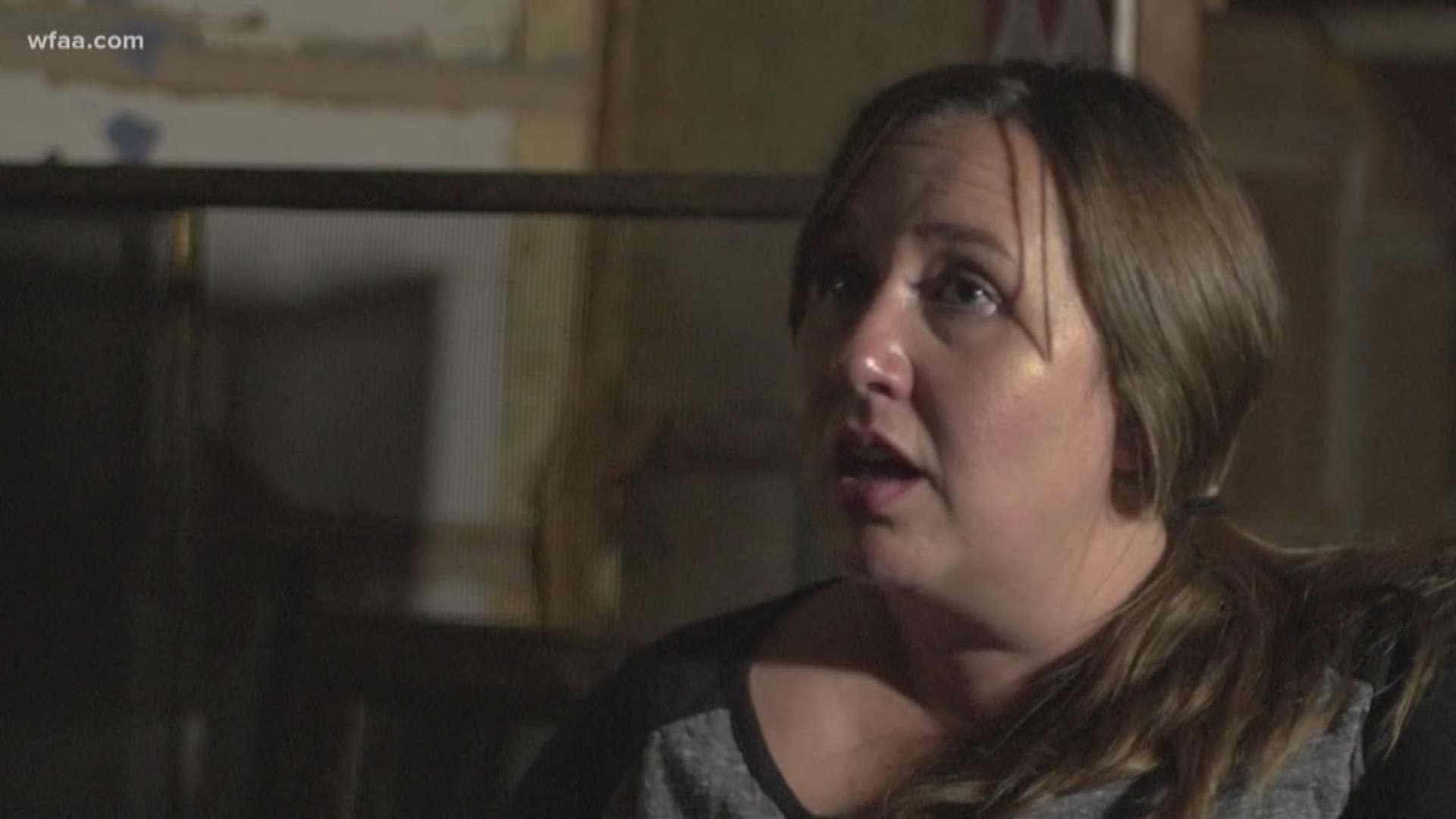On this episode of Verify, we’re going ghost hunting.
We are not exploring if ghosts are real. We’re focused on ghost-hunting technology. Amy Ogletree is a mother of two, a bookkeeper and a Verify viewer. She volunteered to explore this question: is there science behind ghost hunting technology?
“Are you feeling a little nervous?” I ask Amy, as we drive to our first interview.
“No. I'm good,” she answers.
GHOST HUNTING TECHNOLOGY
There's a whole sub-culture of people, some of them seen on popular TV shows that use devices designed to detect the presence of paranormal activity.
Some of those devices are made by Jeromy Jones, who owns a small company from his Corinth, Texas garage called Paranologies. He invited Amy and me to lend a hand at his workbench.
His most popular piece is called the Parascope. Inside a small black box, Jeromy installs a static-detecting chip. He thinks ghosts may give off static electricity - so if the box lights up, and nobody's near, it could be a ghost.
“This is a theory I'm using that spirits can detect static. It's all a theory,” Jeromy tells us.
To test it, he rubs his arm hair making his own static. It lights up.
“We tested it, it does detect static electricity,” she says.
HAUNTED HOUSE
Now, we’re at the Haunted Hill House in Mineral Wells, Texas, popular among paranormal investigators.
“What do you think about this place? We're here now,” I’m asking Amy as we sit on the front step.
“It's creepy-cool looking,” she says.
“It’s kind of spooky,” I say.
“I'm excited,” Amy responds.
Jeromy is here with us and we're going to see ghost hunting technology in action.
“We're trying to research whether this is all paranormal or something we can explain,” says Jeromy.
He brought along one of his devices, called a Poltercom. It scans radio frequencies. The theory is spirits can talk over the white noise it makes.
“Is anybody here with us,” Jeromy asks as we sit in the attic of the Hill House.
Then, from the device we hear what Jeromy thinks is the phrase, “bag of death.”
“Can you say bag of death again?” Jeromy asks.
“No,” Amy says. “Let’s not talk about bags of death, please.”
Next, Jeromy is using his static detector, the Parascope. It's picking up a charge.
“There it is right now. It’s easy to find the field,” he says as he moves the device around the room.
“The one thing we do know, we have a static field surrounding us. What we don’t know is why,” Jeromy says.
Johny, one of our photographers, wondered if the charge was coming from the insulation in the walls. We pulled a small piece from the wall and put it on the ground. He was right. It was the insulation.
“I de-bunked it,” Johny says.
SKYPE WITH A SKEPTIC
It's midnight in the Hill House and we're checking in with blogger Kenny Biddle in Pennsylvania, via video call. He’s a skeptic who writes about paranormal investigations.
“What do you think about voices coming through radio frequencies,” Amy asks.
Kenny laughs, dismissing that there’s any science here.
“They are radios. They are doing exactly what they're supposed to do,” Kenny says.
Biddle says, what we're hearing are random snippets from ads and DJ's.
“And if you combine it with the expectations of a paranormal group that's in there asking questions, over and over. And that's just waiting for something that sounds like a word. Or sounds like an answer that fits what they expect to hear,” he says.
Kenny's studied a lot of ghost hunters. His biggest problem is most do not use technology in a scientific way. Mostly, they're hooked on the thrill.
“You gotta go in and find a cause. If something goes off and you can't explain it, that does not mean it's unexplainable,” he says.
After hearing from Kenny, Amy's feeling a little skeptical about ghost hunting technology.
“I'm not seeing it. I'm not believing it,” she says.
ONE LAST HUNT
But that was before we started the last round of investigation in the Hill House. Phil Krichhoff, who owns the house, is taking the lead.
He's using a different brand of radio scanning box, and he tells us there's a boy here, named Josh.
“Hi, Josh. How old are you?” Phil asks the radio box.
This is where the power of suggestion comes in. Phil had just told us Josh died when he was six, and then I heard a voice say something that sounded like “six.” But when you clean it up and play it back it doesn't sound like anything.
Still, that was weird. And things got weirder still when we hear what sounds, very clearly, like the word “Chance.” That's our producer's name. Then we heard it again.
“It really kind of spooked me and freaked me out a little bit,” Amy says.
So, it's 2 a.m., and our journey is at its end.
Here's what we've learned. A static detector does detect static. A radio scanner is quickly scanning radio channels. But skeptics, like Kenny, say ghost hunters don't use technology in a scientific way.
WHAT DOES AMY THINK?
“I was with Kenny. He made a lot of sense. Until he took me upstairs, and I heard Phil's radio,” she says.
“Put you back on the fence, huh?” I ask.
“Yes, yes,” she says.
“Is there science behind this ghost hunting technology?” I ask Amy.
“Yes. Radio frequencies got me. Everything else, I would say no,” Amy answers. “You good with it?” she asks me.
“I'm not good with that, but this is your trip,” I say.
We saw and heard the same things. I don’t think there's any science here. But Amy does. So, when it comes to the science behind ghost hunting technology, don't take my word for it, take hers.

